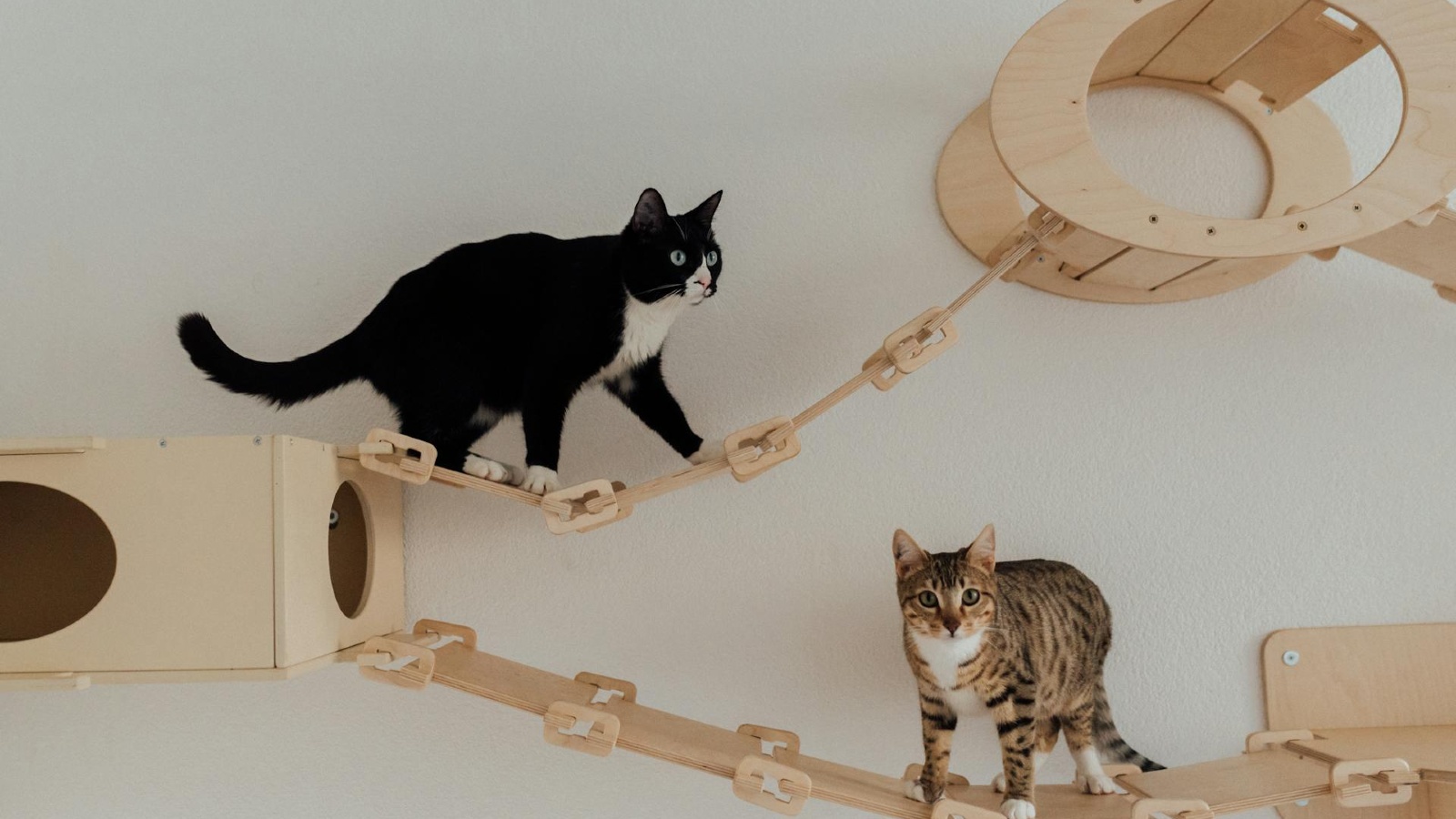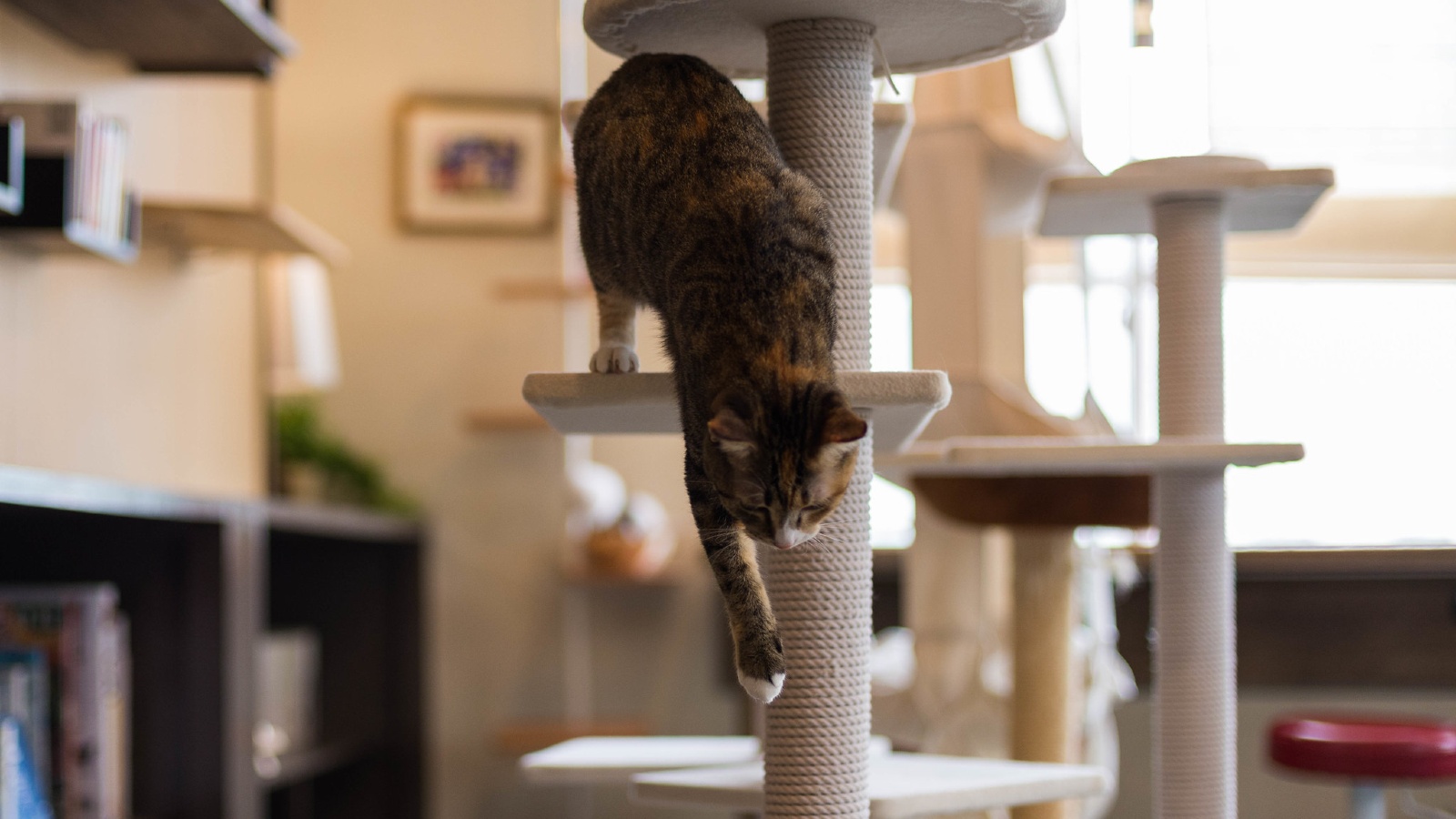Keeping your cat safe at home
Keeping your cat safe, happy, and healthy starts with keeping them within your property boundaries both day and night. This doesn’t mean your cat has to stay indoors all the time. Options like escape-proof outdoor enclosures or fenced gardens can provide them with safe access to the outdoors. These solutions allow your cat to enjoy fresh air and sunshine without the risks of roaming.
A safe and stimulating home environment supports your cat's:
- positive wellbeing
- longer life expectancy
- better overall health.
Simple adjustments can keep your cat safe, protect local wildlife, and reduce their risk of injury or illness.
Quick facts about roaming cats
- On average, a roaming pet cat kills 186 native animals every year.
- Two in three cat owners have lost a roaming cat to a roaming-related accident.
- One in three cat owners have lost a roaming cat to a car accident.
- A cat kept safe at home will live on average 10 years longer than a roaming cat.
Risks of roaming
Keeping your cat at home reduces their risks of:
- car accidents
- dog attacks
- injuries from fights or breeding with other cats
- snake bites
- tick and flea infestations
- diseases like Feline Immunodeficiency Virus (FIV)
- poisoning from toxic plants or substances
- harming or killing wildlife
- being stolen, abused or ending up in a shelter.
Keeping your cat safe at home doesn’t mean they have to miss out on anything. They can live a life full of enriching activities to keep them happy, healthy and active.
Keep your new cat home from the start
- Your new cat is more likely to adapt to a stay-at-home lifestyle if you keep them home from the start. You should keep your cat home during the settling-in period anyway, as they're more likely to run off or become lost.
- Kittens adapt well to staying home, especially if their environment meets their needs from an early age.
Ways you can keep your cat safe
- Start by keeping your cat home at night, then gradually increase their stay-at-home time during the day, ensuring they adapt to each step before moving on.
- Ensure your cat's indoor environment makes them feel safe, happy, engaged, and comfortable. Include opportunities in their space they can use to:
- explore
- practice their predatory play behaviour
- exercise choices, challenges, and control.
There are three main options to keep your cat safe at home:
- Keeping your cat indoors only is often the easiest and cheapest option.
- A small home can be fun and interesting for your cat. Make the most of your vertical space and offer opportunities to interact and play.
- Your home can meet all your cat's needs. Ensure separate spaces for:
- eating and drinking
- sleeping
- using the litter box
- hiding
- scratching
- playing
- Create different levels for your cat using furniture, shelving and scratching posts.
- Install cat-proof flyscreens - keep windows and doors open so your cat can enjoy outdoor sights, smells, and sounds without escaping.
Attached enclosures
- Extend your cat's indoor environment with an enclosed secure outdoor area, such as a balcony or patio. Use wire, netting or solid materials to block all escape points, including sides and overhead.
- Attach a catio to your home via a window or cat flap, allowing free access between indoor and outdoor spaces.
- Ensure the enclosure is escape-proof and prevents entry by other animals.
Freestanding enclosures
- Build a freestanding enclosure, such as a cat condo, if you have enough backyard space.
- Place the enclosure where other animals, like dogs or cats, can't threaten your cat. Consider blocking views of animals that might scare them, such as dogs next door.
Enclosed backyard
- Various products and systems can help escape-proof your backyard or patio.
- Escape-proof fencing allows your cat to enjoy the best of indoor and outdoor living.
- A cat contained in a backyard can still kill or injure wildlife. Minimise this risk by keeping your cat indoors from dusk to dawn. You could also make sure your cat wears a CatBib when in the backyard.
Modify an existing fence
- Modify the top of your existing fence with rolling cylinders, smooth metal or plastic sheeting, or inward-inclined wire to prevent your cat from climbing over.
- You'll need to install the material on both sides of the fence to prevent other cats from coming into your garden.
- A cat-proof fence should have a total height of at least two metres, or your cat may jump over it.
Build a new fence
- Build a new solid fence with an escape-proof top or use netting to create an escape-proof and animal-proof space. Check for gaps in the fence, around gates, where fences meet buildings and overhanging trees.
- If you have a tree close to the fence, a simple way to prevent your cat from climbing the tree is to fix a smooth metal or plastic band around the trunk. Attach the material to the tree trunk at least two metres above the ground.
Helpful tips for your outdoor enclosure
- Keep bird feeders away from the enclosure - watching birds can frustrate your cat.
- Design the enclosure to be comfortable and engaging. Your cat will need:
- food and water
- more than one litter tray
- a variety of platforms at different heights
- scratching posts
- different hiding spots to help them feel safe
- protection from the weather (eg, sun, rain, wind, extremes of heat and cold).
- allow your cat to choose between indoor/outdoor time
- provide comfort in temperature
- can retreat into the house if they're scared.
- RSPCA recommends attached enclosures because they:
Walking your cat on a lead lets them explore outdoor sights, sounds, and smells safely. This option provides your cat with stimulation and exercise while protecting them and local wildlife.
It may take your cat some time to adjust to the lead, but it will be a rewarding experience for both you and your cat.
Tips to create a happy home for your cat
There are five key tips to create a happy, healthy, enriching and positive environment for your cat:
- Create a safe space with resting and hiding spots at various heights. Ensure protection from sun, wind, and rain, and temperature extremes.
- Multiple separate areas and facilities for toileting, drinking, scratching, playing, sleeping and resting.
- Cats express their play and predatory behaviour through toys and play time indoors and outdoors.
- Spend consistent, positive quality time with your cat, both indoors and outdoors.
- Support your cat’s senses by reducing negative impacts and enhancing positive experiences.
Helpful resources
- Biodiversity Council: The impact of roaming pets on Australian Wildlife
- RSPCA: Keeping your cat safe and happy at home
- RSPCA NSW: Keeping cats safe at home
- Cat Protection Society of NSW: Cat-proof fencing and enclosures
- Cat Protection Society of NSW: Balcony safety
- The conversation: The impact of roaming cats
- Threatened Species Recovery Hub: Fact sheet - The impact of pet cats on Australian wildlife
- Threatened Species Recovery Hub: Fact sheet - The impact of cats in Australia
- Threatened Species Recovery Hub: Fact sheet - Responsible cat ownership in Australia
Contact us
If you have any questions about keeping your cat safe and happy at home, reach out to our natural resource team:
- T: 4474 1000
- E: Natural resource team
or our rangers:
- T: 4474 1019
- E: Rangers







